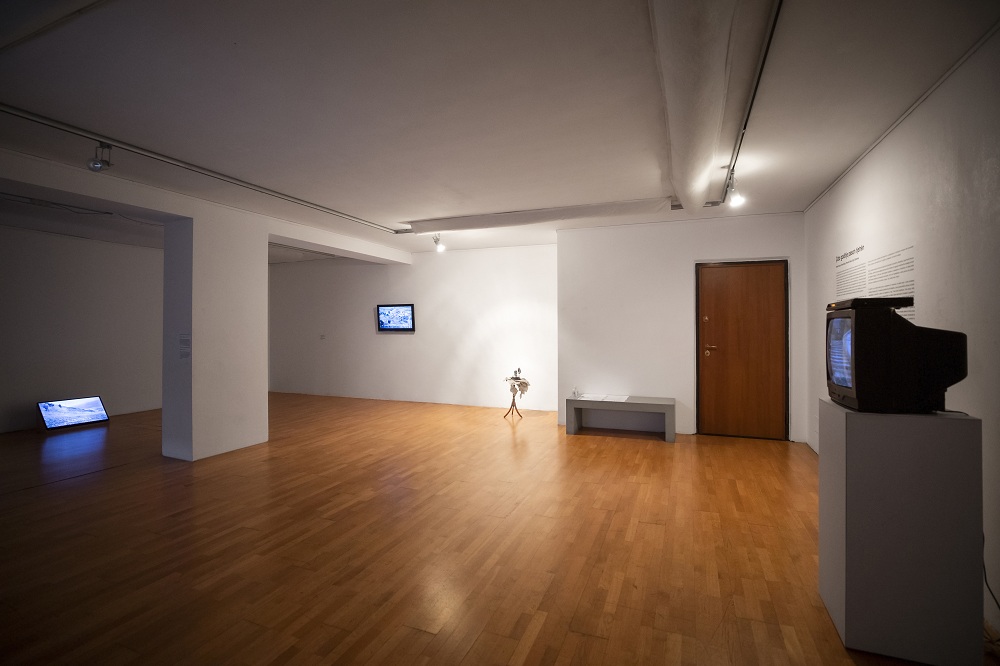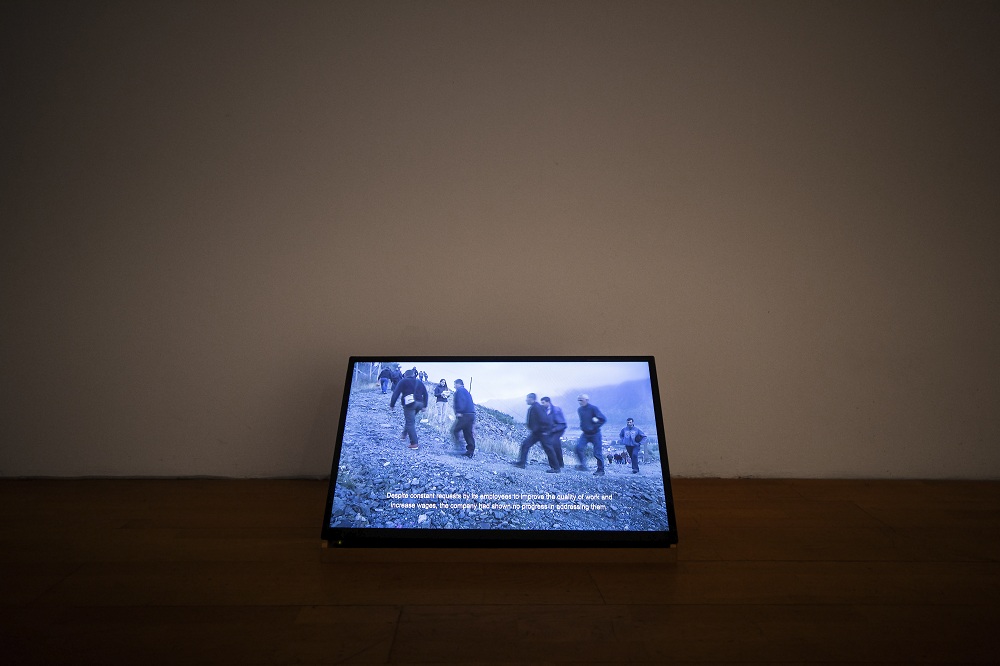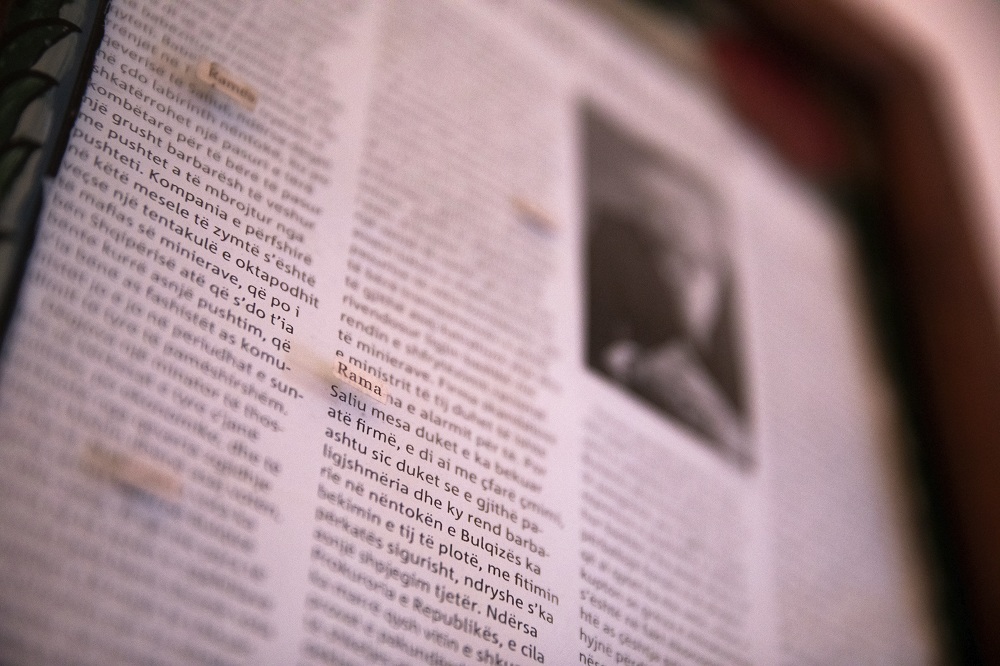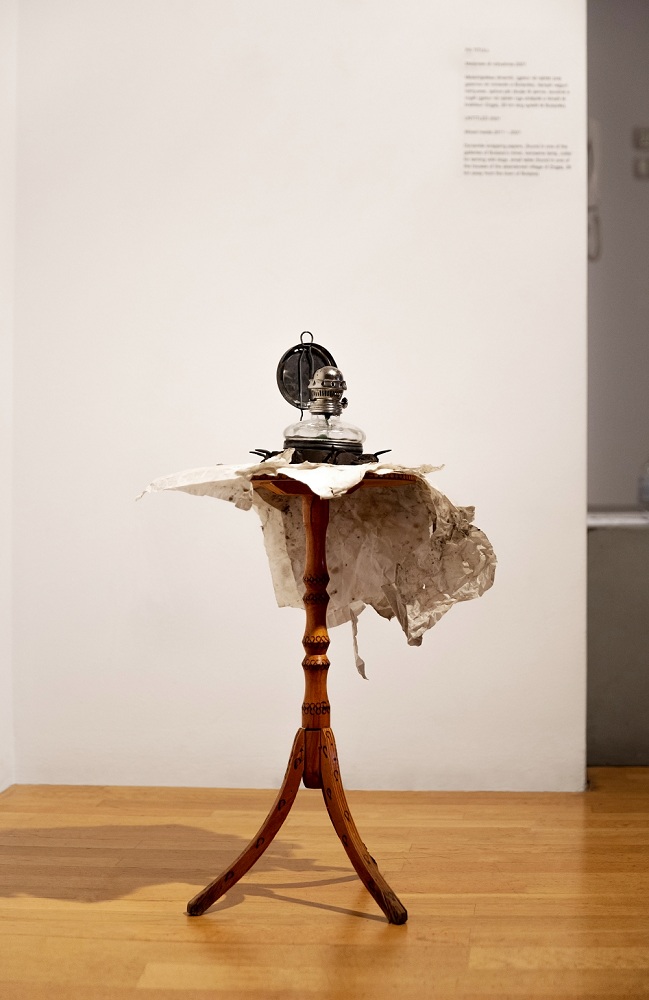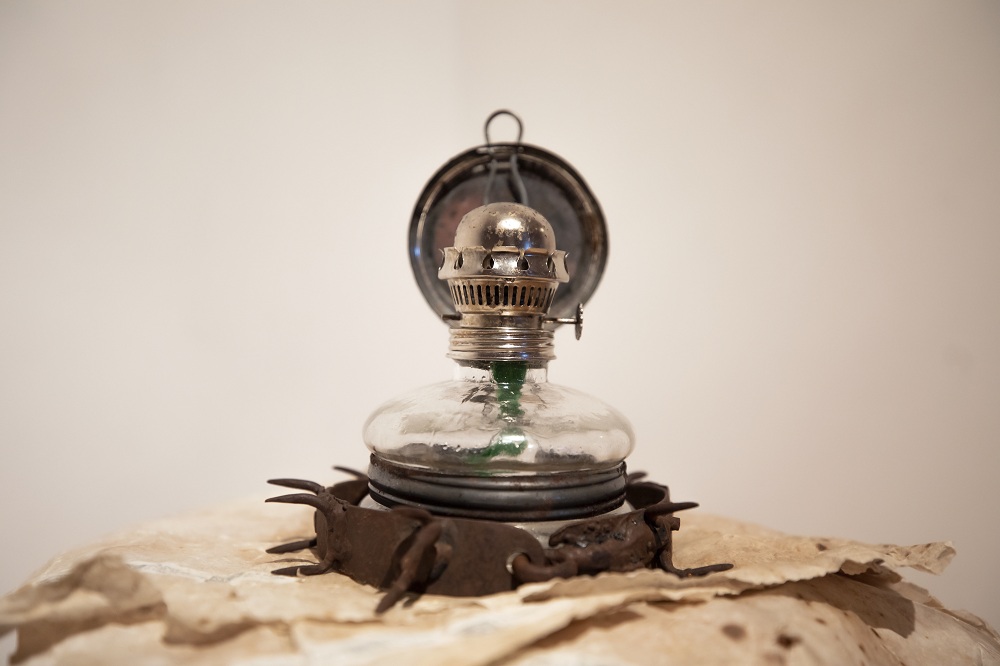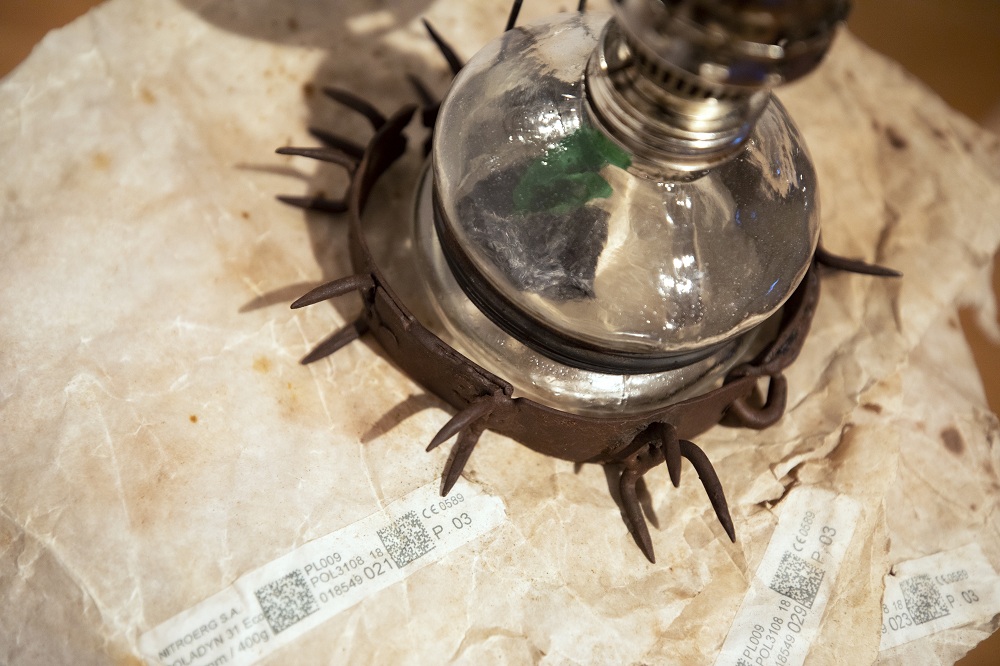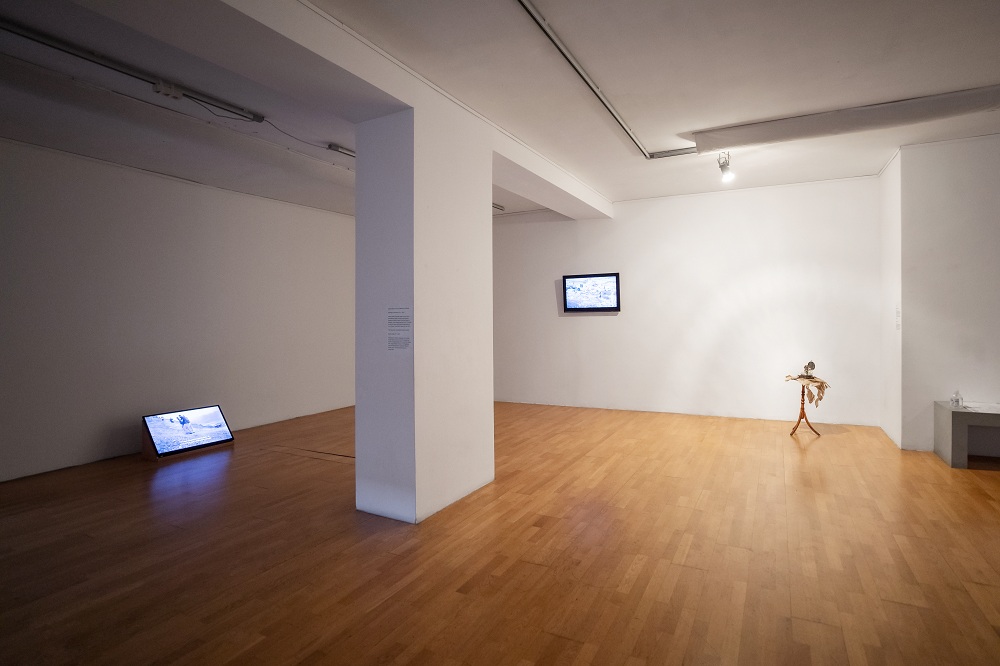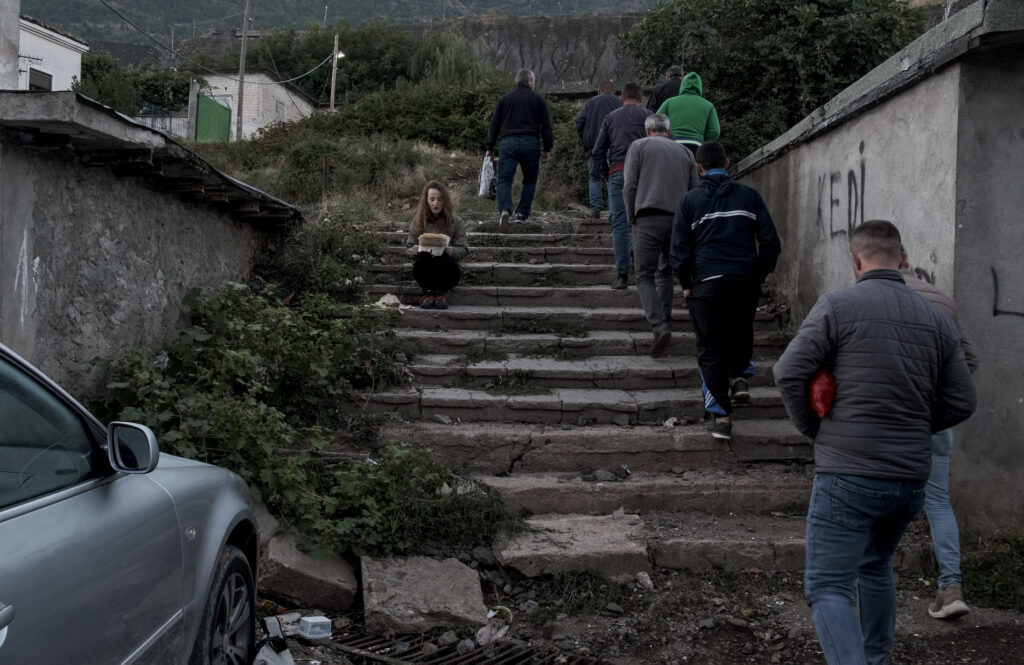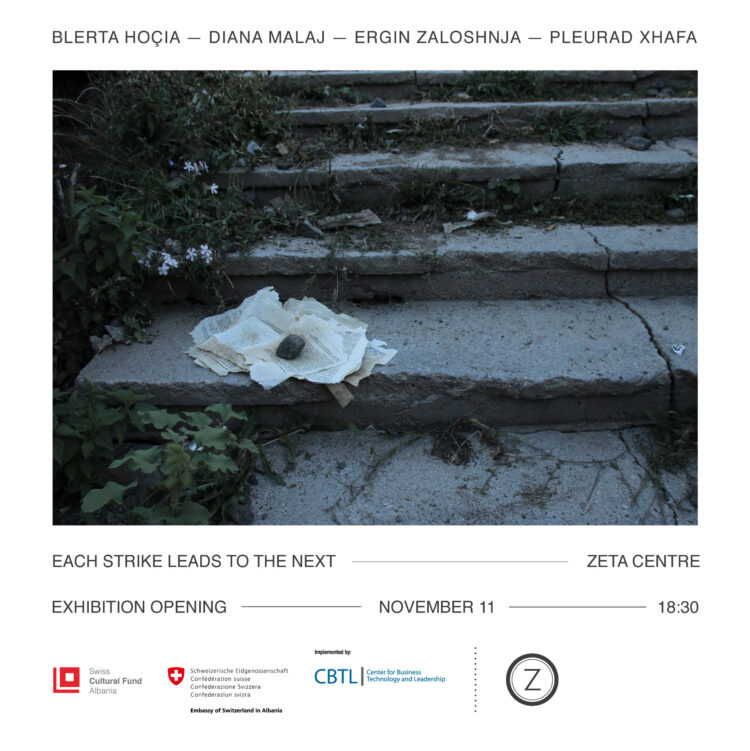“Each Strike Leads to the Next”
Curated by Vincent W.J. van Gerven Oei
With participating artists:
Blerta Hoçia, Diana Malaj, Pleurad Xhafa, Ergin Zaloshnja
On November 11, 18:30.
Like a massive silver-grey tongue licking the inside of the mountain, the chrome deposits of Bulqiza have tempted successive Albanian regimes to exploit its riches. While during the communist period, prisoners were forced to work the mine shafts and wells diving deep into the earth’s crust, the still ongoing transition to democracy has brought the worst excesses of neoliberal capitalism to the region. Dozens of companies – not only owned by oligarchs such as Samir Mane, but also members of parliament, mayors, prosecutors, and their family – compete in a literal race to the bottom, beyond accountability and government control, without properly enforced security protocols, without even properly paying their employees, the miners of Bulqiza. The latter see nothing of the riches that they bring to the surface every day, as their region is invisible to those that hold power, except in the brief windows of election time.
Nothing of the riches, but all of the burdens. On September 20, 2021, the lifeless body of 60-year-old miner Muharrem Plaku was recovered from Gallery no. 3. An experienced miner, he slowly suffocated to death for five days until he was found. Despite the impotent words of chrome mine operator and Bulqiza mayor Lefter Alla to bring Plaku out alive, the absence of a professional search and rescue team meant that there was little hope from the beginning. Although an investigation was started against the company operating the gallery, Kadurtex sh.p.k., the story had already been written: individual responsibility, not following safety protocols; the company is never to blame. Down in the village, the enforcers of the major operators moved menacingly through the streets, monitoring any lingering sense of resistance or protest, their polished, black Mercedeses starkly contrasting with the grey-dusted housing blocks.
In such a situation, how is it possible to make art? This was the difficult question that Blerta Hoçia, Diana Malaj, Pleurad Xhafa, and Ergin Zaloshnja were faced with as they arrived in Bulqiza, less than 24 hours after Plaku’s death. Their answer to this question has an importance that goes beyond its immediate relevance to the context of Bulqiza.
First, it was their decision to collectivize. Abandoning their individual practices as artist in public space, designer, photographer, curator, or social activist (it is irrelevant who was what), they decided to produce work collectively. This gesture is meaningful in a place where miners have struggled to formulate collective demands and organize in a union that truly represents their interests, rather than being an extension of the oligarchic, political class that dominates the mines, a class that demands “absolute peace.” A new union, founded some years back had to operate under constant threats of the mining companies and the Rama government, which prides itself in the “absence of unions” on Albanian territory.
Second, the artists decided to offer a channel to a possible faithfulness. Faithfulness, according to the French philosopher Alain Badiou, is the subjective process through which the truth of an event is recalled and reenacted across time and space. The event, in this case, is the successful resistance of miners around the world against the dehumanizing forces of democratic materialism, in which the only relations are power relations. This is already precisely articulated in the title of the work, “Each Strike Leads to the Next.”
In their work, the artists read off a list of successful miner strikes across the world, and the contexts in which these strikes happened – contexts of corruption and repression very close to the one in Bulqiza. The list is printed on the paper wraps of the dynamite used to blow up the mountain. The text they contain is explosive. Reading through the chronological list on four consecutive mornings, we witness also the gradual vanishing of the figure of the artist. In the video of the first day, we see Malaj arriving and reading the text facing the camera. The videos of the second and third day, featuring Zaloshnja and Hoçia respectively, feature the artists at an oblique angle, while on the video of the fourth and final morning, Xhafa is initially invisible as the miners file up the mountain while looking straight into the camera. A second shot shows him against the background of the Bulqiza valley, whereas the third shot cuts back to the miners walking toward the camera, Xhafa descending the mountain on the background. What is remarkable in this series of videos is both the gradual acknowledgment of the presence of the artists by the workers across the four mornings, but also the displacement of the artists by the workers as subject of the videos. As if, indeed, some of the borders between artist and miner were erased.
We should not make the mistake to call this work “inspirational.” The words spoken by the artists did not inspire any strike, nor did they light any flame of resistance. Nor should we consider the difficulties faced by the few Albanian artists that wish to raise their voice against the criminal usurpation of the public sphere by a small and powerful minority as comparable to the physical hardships faced by those who risk their lives every day inside the mountain. To reuse a perhaps antiquated term, “Each Strike Leads to the Next” is a socialist realist work, in that it portrays the lived reality of the miners of Bulqiza while also recalling its inherently revolutionary potential. In this sense, “Each Strike Leads to the Next” is a firm response to the dark-money-funded decorations featured as the backdrop to the Instagram posts of the Albanian political and social elite, their pathetic irrelevance only surpassed by their intellectual vacuity.
– Vincent W.J. van Gerven Oei
This exhibition is the result of the completion of the two-month residency in the city of Bulqiza as part of the project “Mineral policies”. This project is supported by Swiss Cultural Fund, a project of the Swiss Agency for Development and Cooperation (SDC), implemented by the Center for Business, Technology and Leadership (CBTL).
MINERAL POLICY is conceived at several levels: as a summer residency program in the industrial region of north-eastern Albania for four selected artists, followed by two public exhibitions of newly artworks created on this occasion, a panel discussion and a publication encompassing all previous steps of the project. Blerta Hoçia, Diana Malaj, Pleurad Xhafa and Ergin Zaloshnja have been invited to spend two months in the impoverished municipality of Bulqiza in order to shed light, by means of their respective artistic media, on issues concerning the underprivileged living and working conditions of the local community that are insufficiently addressed through manipulated information channels by public authorities in charge. Known primarily for its rich natural resources of a highly valued mineral (chromium), the region of Bulqiza, situated at a distance of around 130 km from Tirana, treasures the communist legacy of a mining center of Albania. As described by Fjori Sinoruka in the June 2021 Balkan Insight report, for 30 years the state has been neglected their calls “for a special status that would recognize the unique nature of miners, providing for better working conditions, pensions and health cover.” Moreover, the financial exploitation of Bulqiza has been in the hands of private companies, such as Albchrome, one of the biggest in the country that is, conspicuously enough, very much tied to the current political regime. For these and other reasons, the miners, have not been able so far to reach enough public attention in their efforts to change the restrictive survival conditions imposed by their miserable social and economic status – something that most of the visual artists in the Western Balkans in general, and Albania in particular, are able to identify with: lacking themselves a dignified status in their own societies, some artists have recognized miners’ problems as their own and as a valuable goal to fight for – not necessarily from a professional, but rather class perspective.
—–
[*] Fjori Sinoruka, ‘Coffee and Cigarettes’: Albanian Miners Seek Special Status, Fair Pension, Balkan Insight (June 3, 2021). https://balkaninsight.com/…/coffee-and-cigarettes…/
